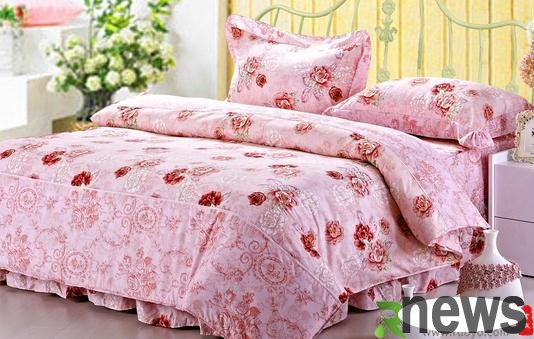Bedspread selection skills and precautions Bedspread selection skills and precautions Bedspreads are one of people's personal belongings. High-quality bedspreads are beneficial to our health, which cannot be ignored. Bedspreads have different te...

Bedspread selection skills and precautions
Bedspread selection skills and precautions
Bedspreads are one of people's personal belongings. High-quality bedspreads are beneficial to our health, which cannot be ignored. Bedspreads have different textures,
1, polyester cotton.
brand products generally use polyester and 35% cotton-based polyester fabrics, and polyester is divided into plain and twill. The plain polyester cotton cloth has thin surfaces, good strength and wear resistance, extremely small shrinkage, and the appearance of the product is not easy to distort. It is affordable and has good durability. Disadvantages: Comfortable and fit is not as close to pure cotton. In addition, since polyester is not easy to dye, polyester and cotton fabrics are mostly light and light tones, which are more suitable for use in spring and summer. Twill polyester cotton is usually denser than plain wrinkles, so it looks denser and thicker, with a better surface luster and feel than plain wrinkles.
2. Silk.
has gorgeous appearance and richness, natural soft light and flickering effects, feel comfortable, has high strength, and is better elastic and hygroscopic than cotton. Disadvantages: It is easy to get dirty and has poor heat resistance to strong sunlight than cotton.
When purchasing a bedspread, you should pay attention to the density of the bedspread. Density is one of the important indicators to measure the grade of fabrics, which is often overlooked by domestic consumers. Bedding sold in foreign shopping malls basically must indicate the number of roots representing the density of the fabric. We must also pay attention to the printing and dyeing of bedspreads. Now the printing and dyeing process is becoming more and more mature, and the variety of patterns and colors of bedspreads are becoming more and more abundant. However, any kind of dyeing material will cause varying degrees of pollution to the human body and the environment, so one less printing and dyeing process on the bedding fabric will have more safety guarantees. How to clean and maintain a bed cover?
The cleaning frequency of bed covers can be determined according to personal hygiene habits. Before the first use, you can rinse it in water and wash off the surface slurry and dyeing. It will be softer to use and will not fade much during cleaning in the future. In addition to the more special materials and those noted that they cannot be washed (such as silk), generally speaking, the washing procedure is: first pour the neutral detergent into the water of the washing machine, the water temperature should not exceed 30℃, and then put it in the bedding after the detergent is completely dissolved, soaking should not be too long. Unnecessary fading may occur because using alkaline detergents or water temperatures too high or detergents do not dissolve or soak for too long. At the same time, light-colored products should be washed separately from dark-colored products during cleaning to avoid dyeing each other.
After cleaning, dry in an outdoor ventilated place. If you want to use a dryer, please choose low-temperature drying. The temperature should not exceed 35℃, so as to avoid excessive shrinkage. When collecting, please clean it first, dry it thoroughly, fold it neatly, and put a certain amount of mothballs (not in direct contact with the product). It should be placed in a dark place, low humidity and well-ventilated place. Covered products that have not been used for a long time can be dried in the sun before reusing them to make them fluffy.